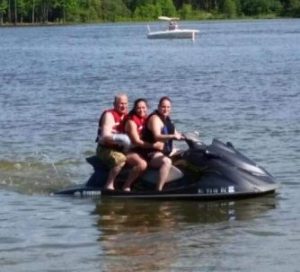Motor Boatin' Bloggin'
How Jet Skis Work: The Mechanics Behind Their Power
September 13, 2016
Jet skis are easily the fastest and most thrilling personal water craft (PWC) available. Essentially, they’re like motorbikes that ride on open water. However, a PWC doesn’t operate in the same way as a boat, with an outboard motor and propeller; nor is it like an actual motorbike with a gasoline engine moving the back wheel. In fact, a jet ski powers through the water by shooting a forceful jet stream of water behind it and the force of the water squirting backwards pushes it forward. The key here is Newton’s third law of motion - every action has an equal and opposite reaction. So how exactly does all of this work internally?
Our boating experts here at Motor Boatin offer the mechanics behind how a jet ski works to provide riders with the thrill they crave:
In fact, a jet ski powers through the water by shooting a forceful jet stream of water behind it and the force of the water squirting backwards pushes it forward. The key here is Newton’s third law of motion - every action has an equal and opposite reaction. So how exactly does all of this work internally?
Our boating experts here at Motor Boatin offer the mechanics behind how a jet ski works to provide riders with the thrill they crave:
- Powering Water Intake. When riders first turn the key, a standard 1500cc gasoline engine engages (the engine is about the same size that would be found in a small car or large motorbike). This power causes large amounts of water to be sucked in through an intake grate located on the bottom of the jet ski.
- Powering the Impeller. In cars and motorbikes, the engine drives the wheels in order to provoke motion. However, the jet ski’s engine powers an impeller, which is kind of like a propeller that’s fitted inside a pipe. The impeller is made of three stainless steel blades, about five inches in diameter. The water is sucked in through one end of the pipe and then expelled through the other end in a high-speed jet stream.
- Steering and Water Speed. The water exits through a steerable nozzle located in the back of the jet ski. It’s smaller in size than the water intake grate, so the force of the water being pushed out helps to build up speed for the jet stream. Steering is similar to a motorbike, or simply turning handlebars one way or another. The handlebars pull a cable that turns the water jet in the steering direction, thus enabling riders to maneuver with ease. It’s important to note that since the speed of the water jet powers the jet ski, they are more effective at high speeds and are more difficult to ride at low speeds.